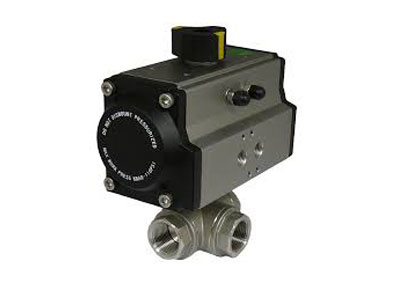How Does A Dcv Work?
Key Takeaway
A directional control valve (DCV) is essential in hydraulic and pneumatic systems, managing the flow of fluid to control movement and direction. It operates by shifting between different positions, which redirect the fluid between various ports. This shift can start, stop, accelerate, or change the direction of motion of an actuator, depending on the valve’s configuration. Each position of the valve determines the path that the fluid takes, creating open or blocked pathways as needed.
DCVs are typically controlled manually through levers or buttons, or automatically using solenoids or hydraulic signals. The neutral position of a DCV can isolate an actuator or prevent fluid from flowing to it, while other positions allow the fluid to move in a desired direction. This versatility makes DCVs vital for applications like machine operation, where controlling the flow of fluid to start, stop, or change the direction of a cylinder or motor is required.
Understanding the Function of Directional Control Valves
The primary function of a DCV is to direct the flow of air or fluid to specific parts of a system. These valves control the flow paths within a circuit, ensuring that the right components receive the required airflow at the correct times. The valve shifts between different flow positions to start, stop, or divert airflow, thus regulating the operation of machinery like actuators.
DCVs are fundamental to automation, enabling the controlled movement of parts, the actuation of systems, and maintaining pressure balance in pneumatic setups.

Components and Mechanisms Involved in DCV Operation
DCVs consist of several components that work together to regulate the flow of air:
Spool or Poppet: The spool moves within the valve body to open or close specific ports, controlling the flow direction.
Ports: These are the openings through which the air enters and exits the valve, usually categorized as inlet, outlet, and exhaust ports.
Actuating Mechanism: This could be manual, pneumatic, or electric. It is responsible for shifting the valve’s internal components to change the flow path.
Each of these parts plays a critical role in allowing DCVs to perform their function of directing airflow precisely.
How DCVs Regulate Airflow and Pressure
DCVs regulate airflow by shifting their internal components to create specific pathways for air to travel. When the valve is actuated, it directs air from one port to another, either supplying pressure to a pneumatic actuator or allowing air to exhaust.
The valve can also manage pressure by directing airflow in a controlled manner, ensuring that air is distributed properly across the system. DCVs typically have multiple positions that regulate flow rates, pressures, or the direction of flow, depending on the configuration of the system.
The Role of Solenoids and Actuators in DCV Operation
In many modern DCVs, solenoids play a crucial role in their operation. A solenoid is an electromagnet that, when energized, moves the valve’s spool to a new position, thus controlling the flow path.
Actuators—whether electric, hydraulic, or pneumatic—are used to physically move the valve’s internal components. These actuators allow for remote or automatic control, which is especially useful in automated systems where human intervention is minimized.
Together, solenoids and actuators enable DCVs to operate smoothly in both manual and automated settings.
Troubleshooting Common Issues in DCVs
DCVs may encounter several common issues, such as:
Sticking or Jammed Valve: Caused by dirt, wear, or lack of lubrication. Regular cleaning and lubrication can prevent this.
Leaking Ports: Air leakage from seals or improperly connected ports can lead to inefficiency. Ensuring proper sealing and tight connections is essential.
Electrical Failures: In solenoid-operated DCVs, electrical malfunctions or wiring issues can stop the valve from shifting properly. Checking wiring and solenoid functionality can resolve this.
For troubleshooting, it’s important to identify the specific problem through systematic checks like pressure testing, visual inspections, and monitoring solenoid function.
Conclusion
Directional Control Valves (DCVs) are vital components in pneumatic systems, enabling the precise direction of airflow and controlling pressure across various devices. Their components, including spools, solenoids, and actuators, work together to regulate flow and ensure system efficiency. Proper maintenance and troubleshooting are crucial to keeping DCVs operational, highlighting their essential role in fluid control and automation processes.

